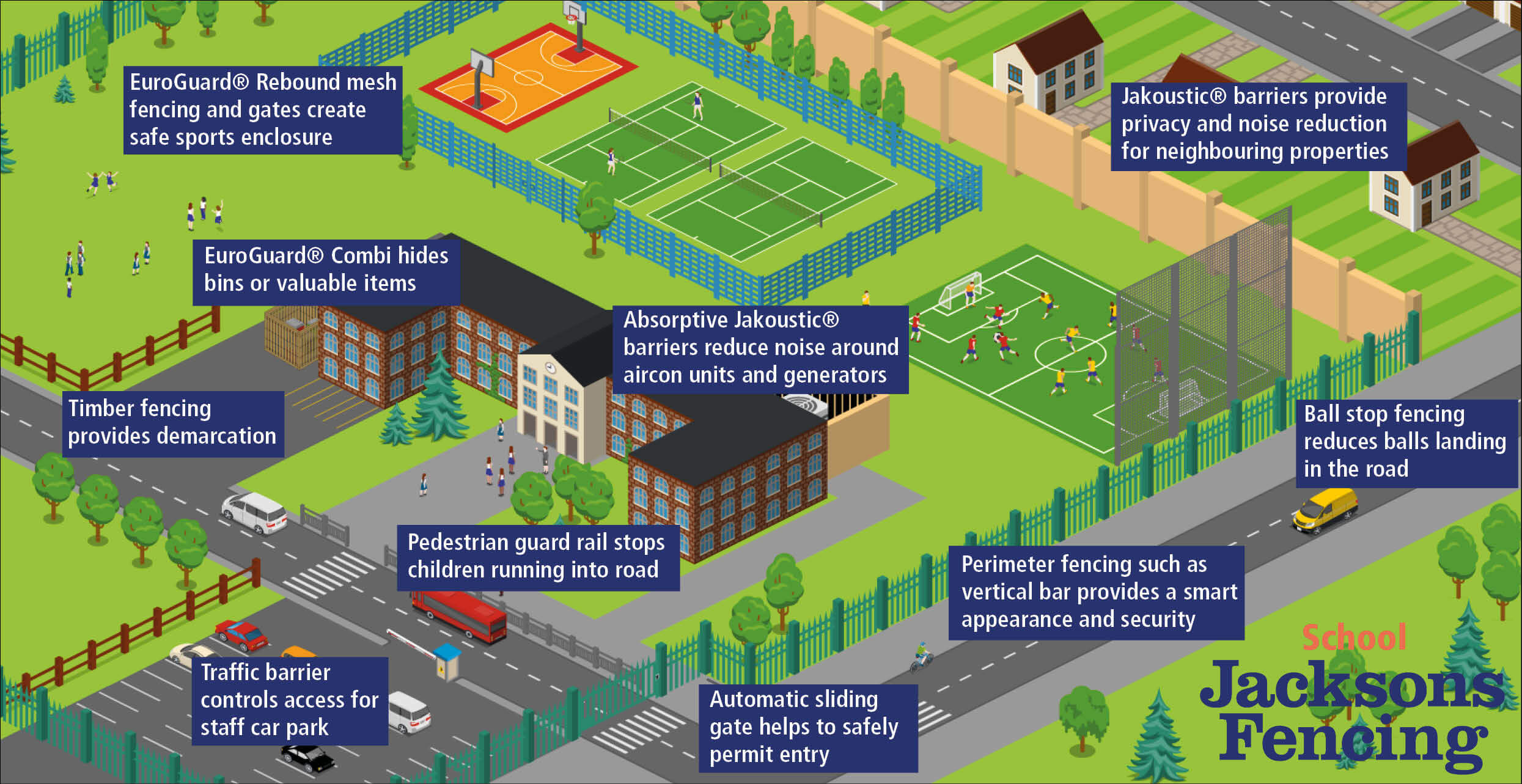Our other sites:
School Safety and Security Today and Into The Future
By looking at the fencing, gates and other security measures, parents and visitors get a clear impression of a school's commitment to safety and security well before entering its grounds.
To parents and guardians, the safety and well-being of their children is above all the most important factor when choosing a school.
Appropriate fencing and gates are essential in preventing unauthorised entry to the grounds, protecting pupils, staff and visitors from accidents and injury, deterring truancy, reducing theft, anti-social behaviour and malicious damage.
The type and condition of the fencing and gates project the image of the school and its values to students, staff, visitors and the community.
Commonly, schools have tight budgets, so security strategies should have the lowest lifetime costs, providing safety for pupils to come well into the future.
Matching your boundary protection to the risks you face
Occasionally there may be need for perimeter fencing and gates which offer a higher level of security due to higher levels of crime or where local circumstances dictate.
Secured by Design provide an excellent overview in their schools guidance document, with an interactive guide on securing schools against a comprehensive range of risks including where higher security boundary protection is required. We are delighted to have made a contribution to their guidance on timber and steel fencing and gates and thoroughly commend its initiative.
But don’t be too concerned, there’s no need to project a fortress like image as there are fencing and gate options which are Secured by Design approved and LPS1175 certified which can be ‘dressed’ to look less imposing and even of architectural merit beyond their purpose.
Where to start
It’s relatively quick, easy and inexpensive to change the wall colours, light fittings or furniture in a school, but your choice of boundary protection and access points are a more permanent fixture of your site, so whether renewing, refurbishing or building from new, the fence, entrance gates and access control should be carefully considered in order to provide a realistic and appropriate level of physical security, commensurate with the risks it could face while either making a bold design statement in its own right or blending into its environment. It’s the first thing pupils, staff and visitors see and the last thing you’ll want to replace.
Fitness for purpose, low maintenance, sustainability and image projection are the basic requirements you should look for, as well as aesthetic qualities.
Carry out a risk assessment
The starting point in designing a perimeter is always to carry out a risk assessment which will take a number of site specific factors into consideration.
It is really important for the bulk of the assessment to take place walking around the site and viewing it from an intruders’ perspective rather than looking at it through a window from a desk; after all, in most cases, the primary function of your boundary protection will be to prevent unauthorised access to the school grounds.
You will find it useful to take photographs and make notes and drawings to remind you of the layout of the site, its access points and the position of existing buildings, structures, elevated ground, trees etc which will help in informing your selection of the right combination of fencing and gates to meet your needs.
Assess the surroundings of the school and whether there busy main roads and public areas close by. Make sure you consider additional areas of the school that have easier access by the public to protect from littering and dog fouling. Think about opening hours, and whether additional security measures like lights might be needed in certain areas.
enquire about School safety and security fencing
If you require any product guidance or advice on a project, please get in touch with us using the button below.
Contact UsSafety first
- • Look for RoSPA approved fencing, Gate Safe, and high quality products.
- • Bad paint and cheap timber are likely to crack and splinter, looking unattractive and providing potential for injury.
- • Make sure gates match the fencing in height and style so weak points are protected.
- • Consider self-closing mechanisms for gates to cover you in the instance of forgetfulness.
- • Decide how people will access the site – using various control options such as key cards for automatic doors, intercoms for visitors, and rising arm barriers for staff car parks.

Related
We provide security fencing solutions for a wide range of educational establishments, from nurseries to universities. We have several pages focusing on areas of interest.
If you need help please contact our knowledgeable sales team.
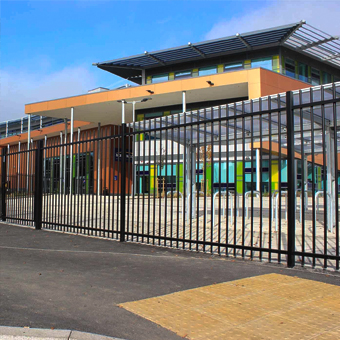
School Fencing Guide
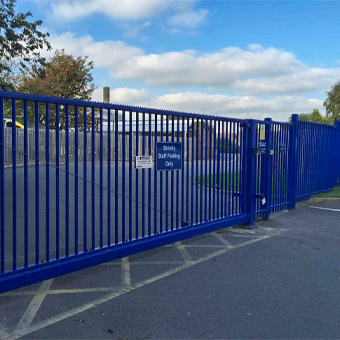
Automatic Gates at Schools
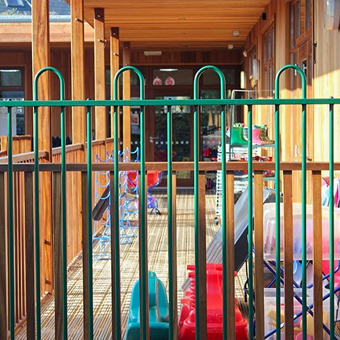
Is your playground safe?
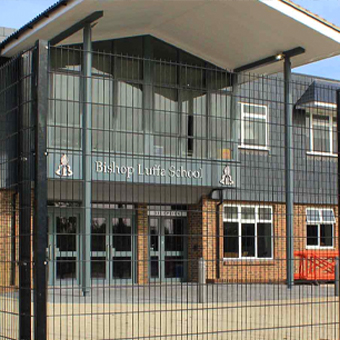
Choosing the Right Fencing in and Around School Grounds
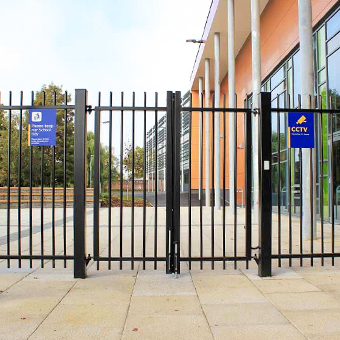
Creating a Safe and Secure School Environment
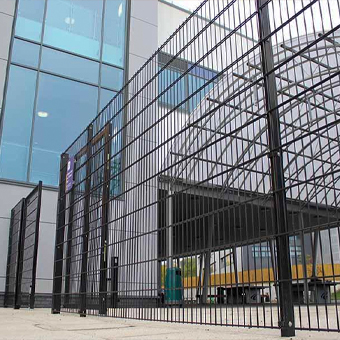
Fencing and Gates for Schools in Higher Risk Areas
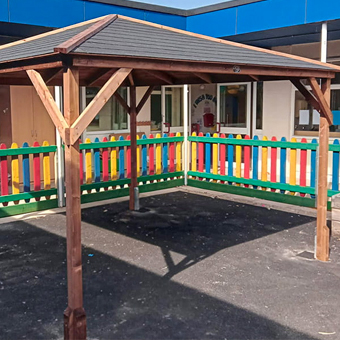
Is your playground safe?
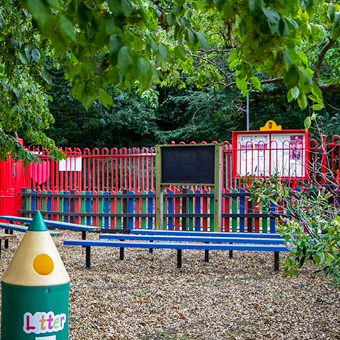
Outdoor Classrooms
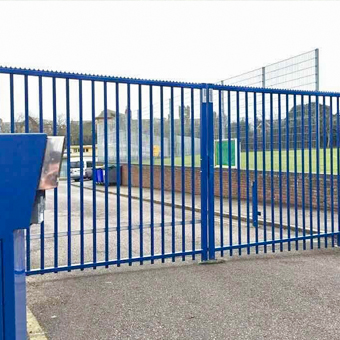
Playground Safety and Security
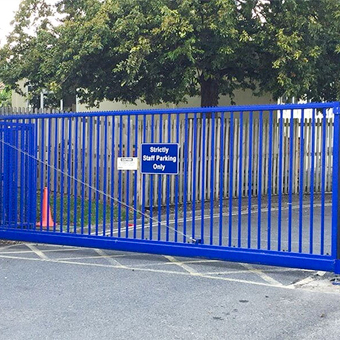
School Entrance Security Gates
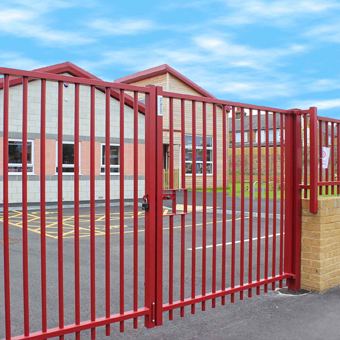
School Security - Its Beyond a Duty of Care
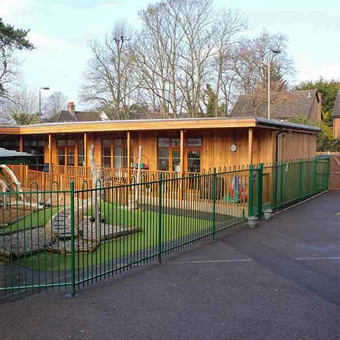
Sustainable School Fencing
Top
